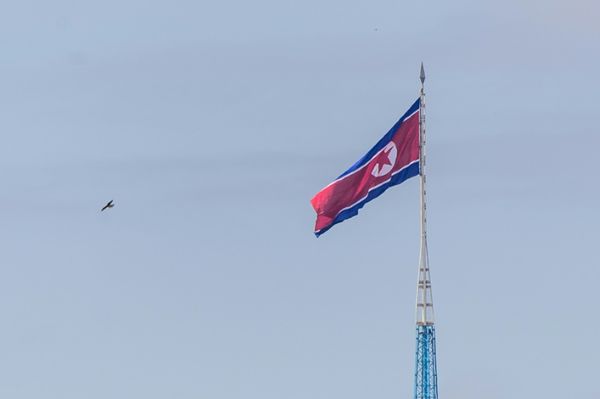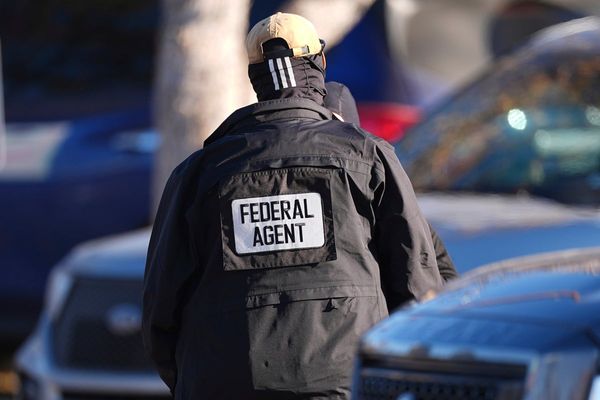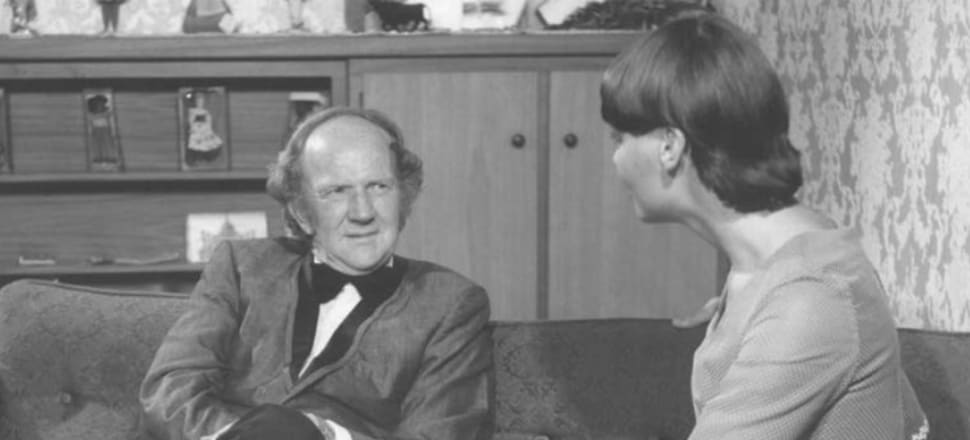
World War II veteran and Central Otago high-country farmer Eden Hore had a surprising sideline: collecting designer dresses. These days, the dresses show up in fancy settings such as Lower Hutt’s Dowse gallery
Fashion-loving farmer Eden Hore had a garden fountain big enough to entrap a horse and a personality to match.
A collector, stockman, tourism pioneer and innovator-at-large, Hore is best known for combining traditional high-country farming out the back of Naseby with curating an historically significant dress collection.
The 1970s and 80s gowns are undeniably fab, most recently knocking the socks off visitors to an exhibition in Wellington. Equally remarkable, however, is his array of other innovations, collections and calamities.
Hore’s keen eye for fashion was certainly uncanny considering he had very little education and was born and raised in the back blocks of Central Otago.
“He went to Kyeburn Primary, although he probably spent more time rabbiting than he did in school,” says relative Margaret Steele.
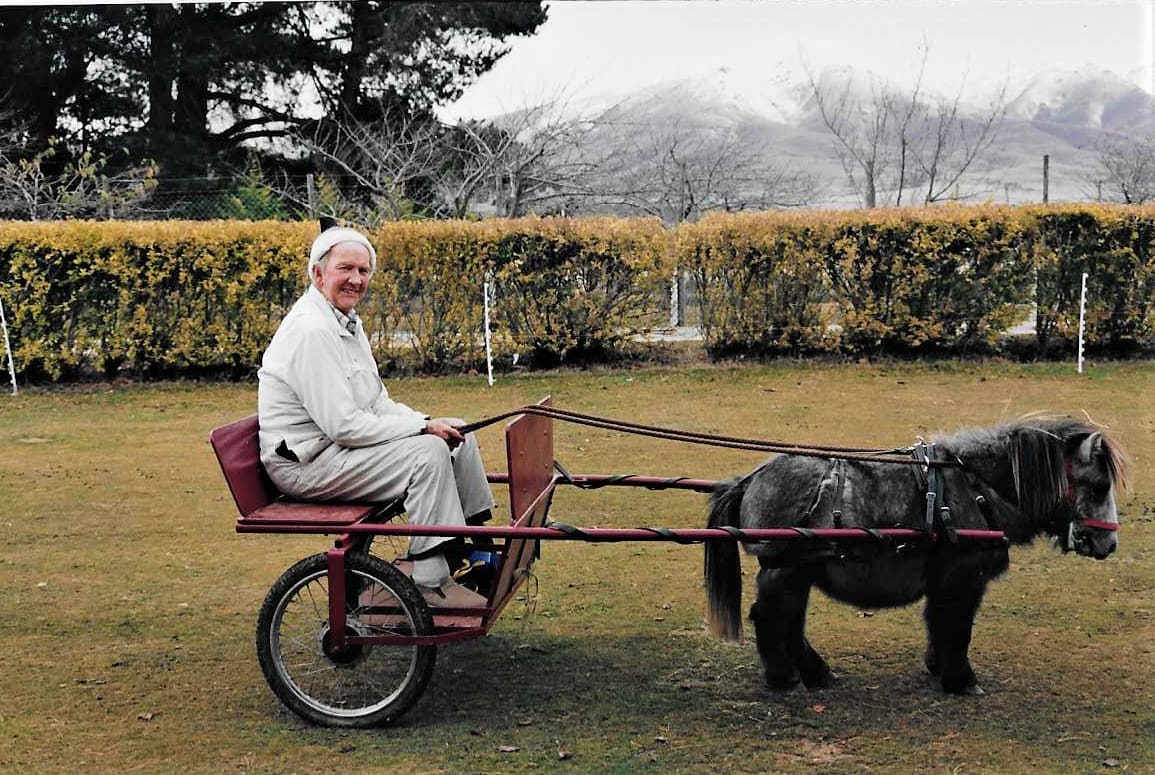
“But when he made up his mind to do something, he did it. He was a great stockman - stock was his thing.”
Margaret’s late husband John was Eden’s nephew and the couple farmed just a few kilometres up the road from the man family remember as “Uncle”.
Hore spent the war in Egypt and Italy, coming home a troubled young man. He married, but soon separated, and was an alcoholic, Steele says.
With his red hair and a short fuse, family learnt to stay out the way if he wasn’t having a good day. But later in life Hore kicked the booze.
For Steele and her daughter Jo Dowling, at least, his gregarious personality and generous nature are what dominate the memories.
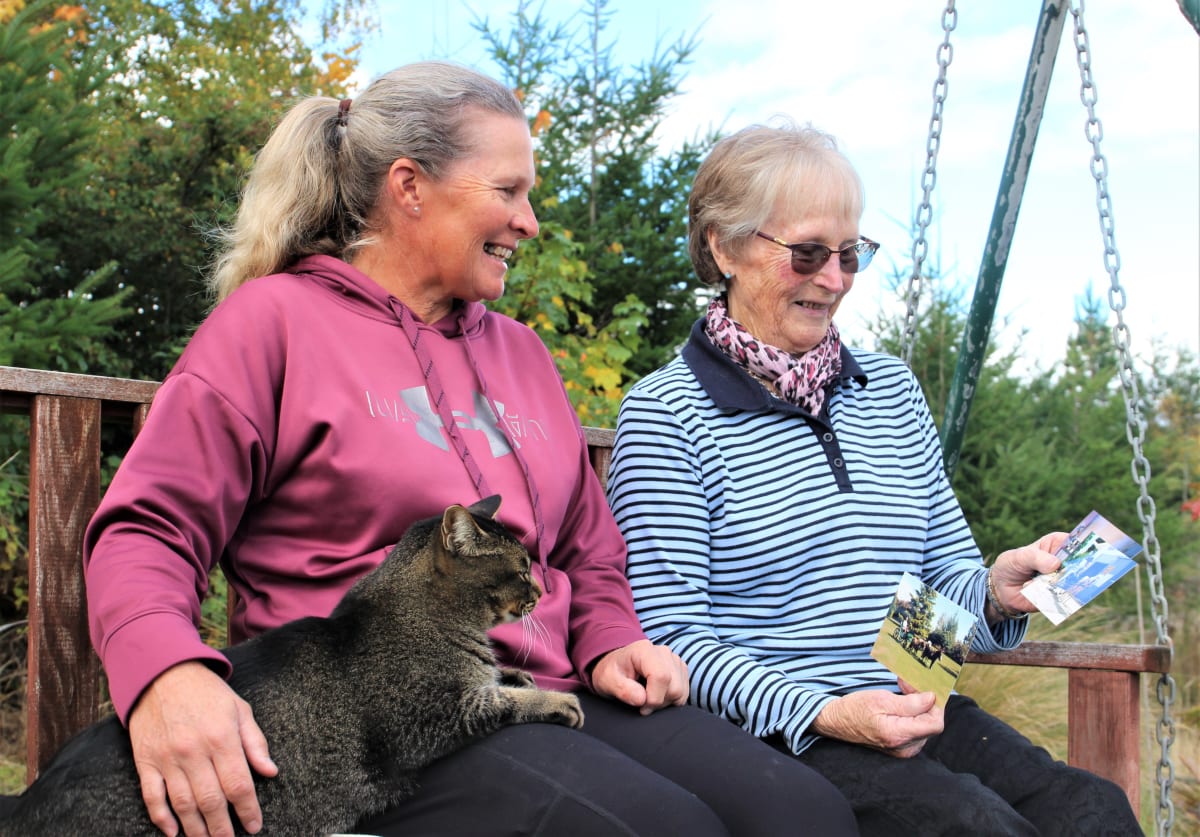
Farming, fashion and beyond
Glenshee Station, a vast and successful farm running cross-bred sheep and Hereford cattle, was his home. It is about 8km to the east of Naseby, where Hore was born.
Helping him find his way from there to the Farry family’s renowned Dunedin modelling agency, Vanity Walk, was his housekeeper, a young fashion enthusiast named Alma.
Originally from Millers Flat, she is credited with sparking Hore’s interest in dresses, which in turn connected him with a fun and flamboyant crowd living the dream in New Zealand’s early fashion and entertainment industries.
Miss New Zealand pageants, fashion shows, parades and concerts would regularly lure Hore off the farm, often with promoter Joe Brown. Budding singer John Hore (now Grenell) was starting to perform and Eden Hore’s generous nature saw him take the young talent under his wing.
“John was such a shy wee thing then. He wouldn’t go anywhere without Uncle,” Steele says.
Hore helped get aerial topdressing off the ground in New Zealand and was the first importer of miniature horses.
Later in life, he sold most of the tussock-covered station, retaining 100ha on which he developed what became the celebrated Glenshee Park tourism attraction.
Hore, who loved entertaining, stocked the park with a fantastical array of animals and plants including a dingo, coyote, five cantankerous yaks, fancy breeds of rabbit, dozens of miniature horses, an elderly bison, pigs large and small, ostrich, emu, cockatoos and deer.
He had three paddocks dedicated to tree specimens, two fountains and elaborate formal gardens. Indoors were the dresses, fabrics, collections of plates, teaspoons, dolls, decanters and more animals, these ones having started life out in the park before making a trip to the taxidermist.
Some of the animals came from New Zealand zoos, but the yaks, which he always grumbled about being the “stroppy type”, came from a Toronto zoo. This import pushed New Zealand’s biosecurity authorities well past their comfort zone, but somehow the beasts got through.
While Hore globe trotted extensively on random shopping expeditions for knick-knacks, fabric and interesting creatures, Steele and husband John kept an eye on the farm.
“He always said that he didn’t have a wife, so he could do whatever he wanted,” Steele says with a laugh.
Uncle fun
Dowling appreciates that her childhood was much more entertaining and possibly a bit more hazardous than most thanks to being Uncle’s sidekick-helper on and off the farm. Not many kids have baby yaks at their birthday parties, high-fashion thousand-dollar gowns for dress-ups or 20 different breeds of rabbit as playmates.
She recalls travelling to shows in an old van, Hore at the wheel and a cargo of whinnying miniature horses poking their heads over from the back.
Today, Dowling and Steele are neighbours, both living near the entrance to charming, wooded Naseby, about 20 minutes’ drive from Ranfurly in the Maniototo. They remember a man who was as much at home mustering cattle on horseback as co-ordinating the catwalk at a fashion event.
His riotous life was not without mishaps, such as when a horse fell into the fountain, to be helped out by mother and daughter using a door as a ramp. And also not without some lingering angst.
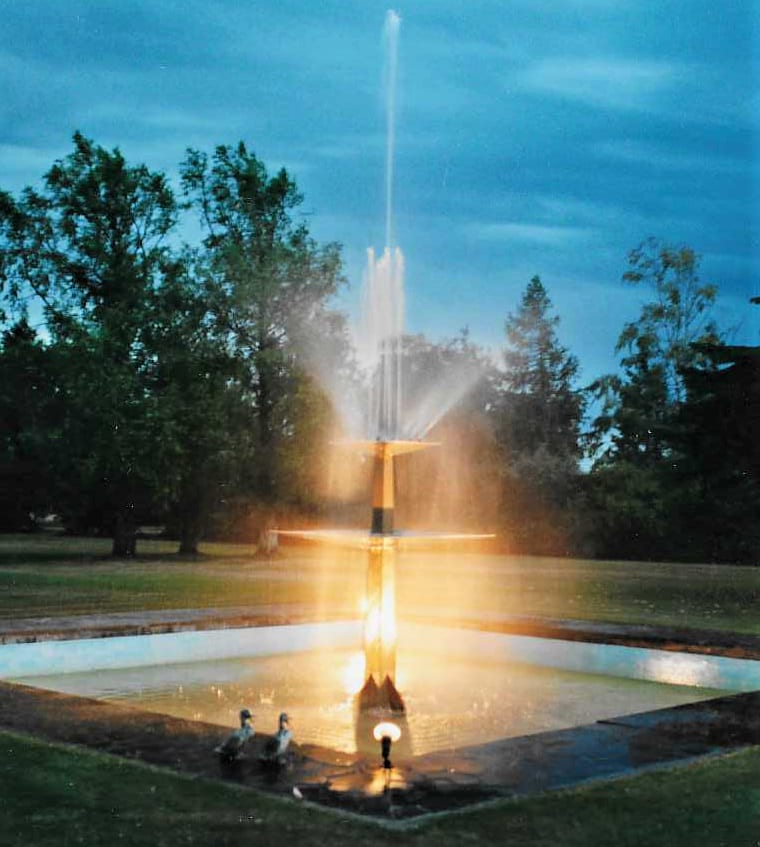
Glenshee Park was a pioneering business that from the 1970s brought thousands of visitors to the area with little or no marketing. The Steeles moved there and ran it after Hore finally shifted to a Ranfurly rest home where he died in 1997.
The formal gardens had fallen into decline, but were resurrected by Margaret Steele and family and will soon, under new ownership, be a stop on an upcoming garden tour.
Steele says the house needed a bit of attention after Hore’s many years as a bachelor with only “the odd girl passing through”.
“The animals didn’t actually live inside but they certainly came inside, the tahr and his deer and miniature horses. And his family of mice.
“If we called in for five minutes to check on Uncle, we’d always end up there for two hours,” she remembers, laughing.
She and her daughter reckon Hore was a bit of a show-pony and would be delighted his dress collection was held in such high regard today, turning heads in the big smoke.
They say designers would often call trying to get him to add something of theirs to the coveted racks but he only ever took what he liked.
Dress-up time
The family cringe now to think of Hore’s sometimes rough and ready roadshows. When the dresses were taken somewhere, Dowling says, they’d be stuffed into suitcases, and she recalls wearing them to parties.
Hore enjoyed having visitors dress up and helping organisations like Plunket with charity fashion shows.
One dress caused him a bit of regret after a photographer cajoled him into donning it.
“It was a horrible mustard-coloured thing with a sort of hood. He ripped it on the motorbike. I don’t know what happened to it - whether he ever got it fixed.”
While the incongruent passions of farming and fashion did cause second glances, his farming friends accepted Hore for who he was, the pair say. The family knew that working with horses and being out on the hill mustering cattle was Hore’s truest happy place.
At the start of his collecting, it was wool and leather that most appealed, but as he honed his eye, the scope widened. Today the dresses are recognised as some of the best work from New Zealand’s top designers of the time.
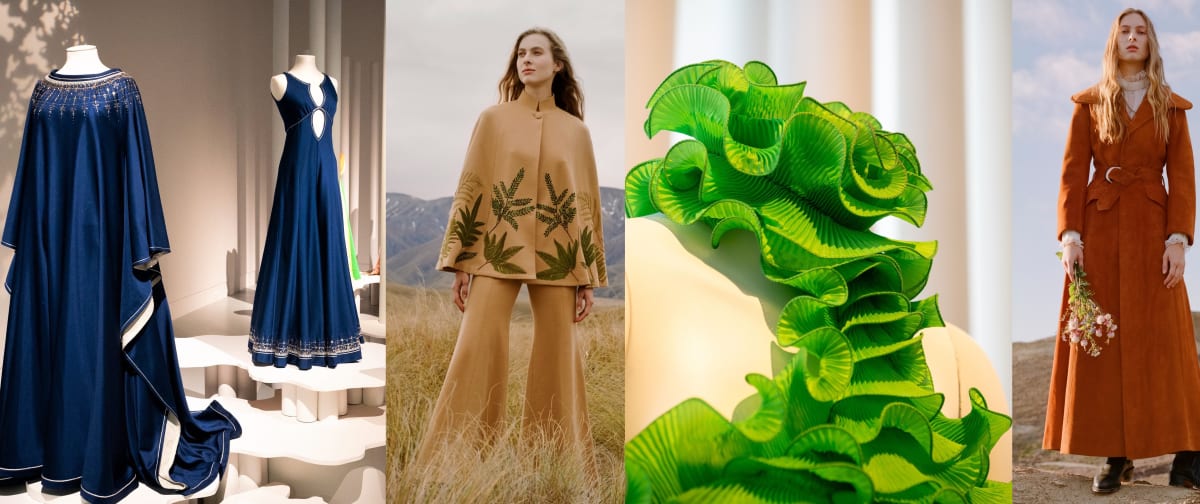
When Glenshee Park was eventually sold, all of Hore’s collections were trucked away to auction. The dresses could have easily gone too, but the Steeles stepped in, eager for this quirky but fabulous bit of Central Otago treasure to be retained.
They approached the local council and despite a few ratepayers huffing about public money being spent on flashy gowns, a 276-piece collection was sold to the Central Otago District Council for $40,000 in 2013.
Chaired by Mayor Tim Cadogan, the Eden Hore Central Otago Steering Group now organises events and fundraising opportunities for a collection held in much esteem as “an important part of the cultural and historic fabric of Central Otago”, according to a council media statement.
Actor Sam Neill is on the steering group, along with dress historian, artist and curator Dr Jane Malthus and Margarita Robertson ONZM, who established the NOM*d label and Dunedin store Plume.
District council community and engagement manager Paula Penno says working on the Eden Hore project was an “absolute privilege”.
“People love the Eden Hore Central Otago story – they find it inspiring and uplifting. It has provided people with an opportunity to escape from the hum-drum of everyday life to a world of beauty and possibility.”
In the collection’s first outing beyond the South Island, the Dowse Art Museum in Lower Hutt recently staged an "Eden Hore: High Fashion/High Country" exhibition as part of its 50th anniversary programme. It featured some of the most striking garments from the collection and large-scale photographs and moving images from a shoot done in 2019 in Central Otago by photographer Derek Henderson.
The exhibition, put together by Claire Regnault, a Te Papa curator specialising in dress histories, was a hit with the city fashion and arts crowd.
Dowse senior curator Dr Chelsea Nichols says they had expected a good reaction but underestimated how many different kinds of gallery-goers would fall in love with the man, the place and the garments.
“Perhaps sparkling gowns mixed with the bleating of sheep was just the thing that everyone needed after such a tough year. I suspect that Central Otago will be seeing a big uptick of fashionable Wellingtonians poking around.”
Made with the support of the Public Interest Journalism Fund



